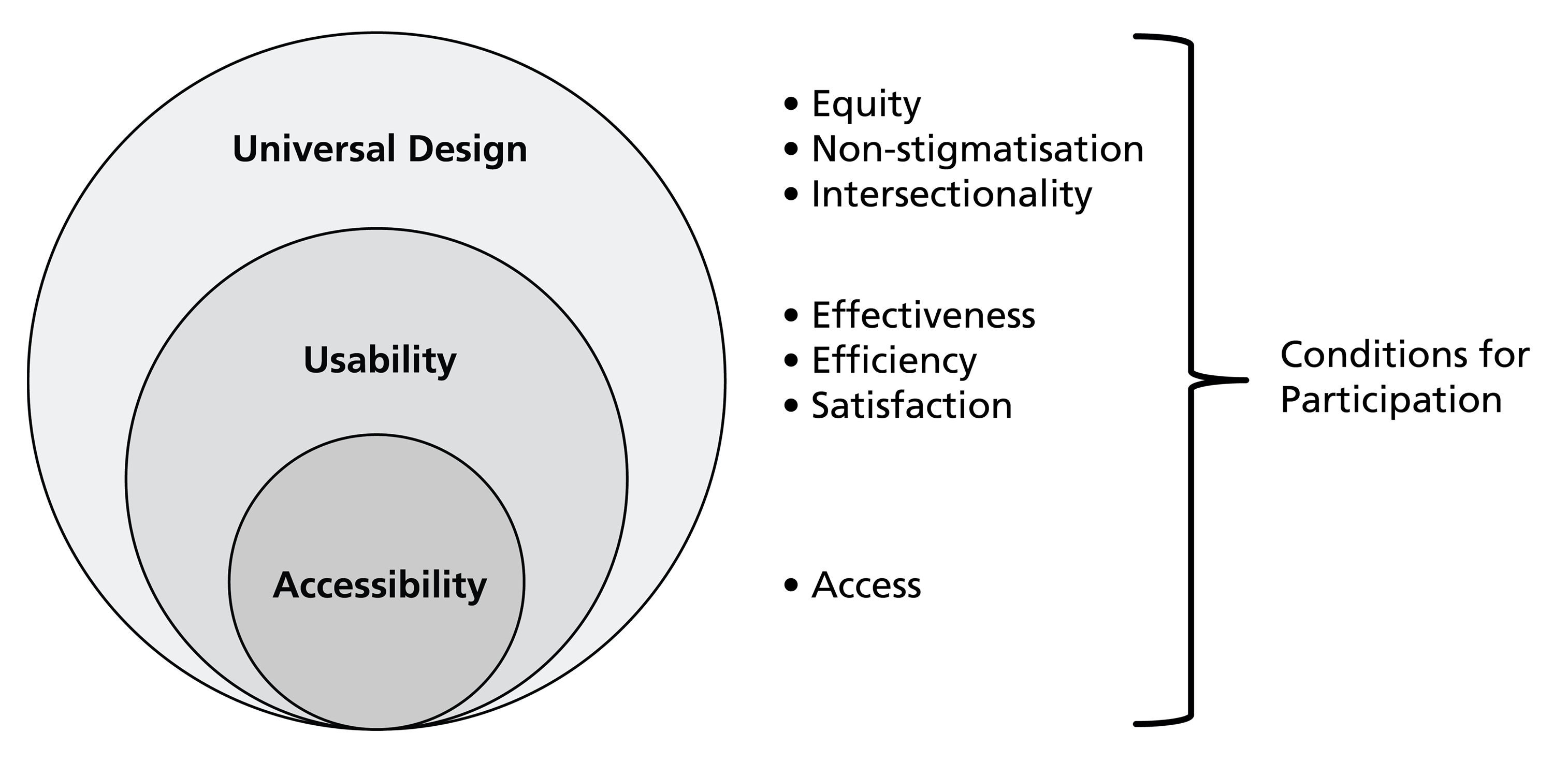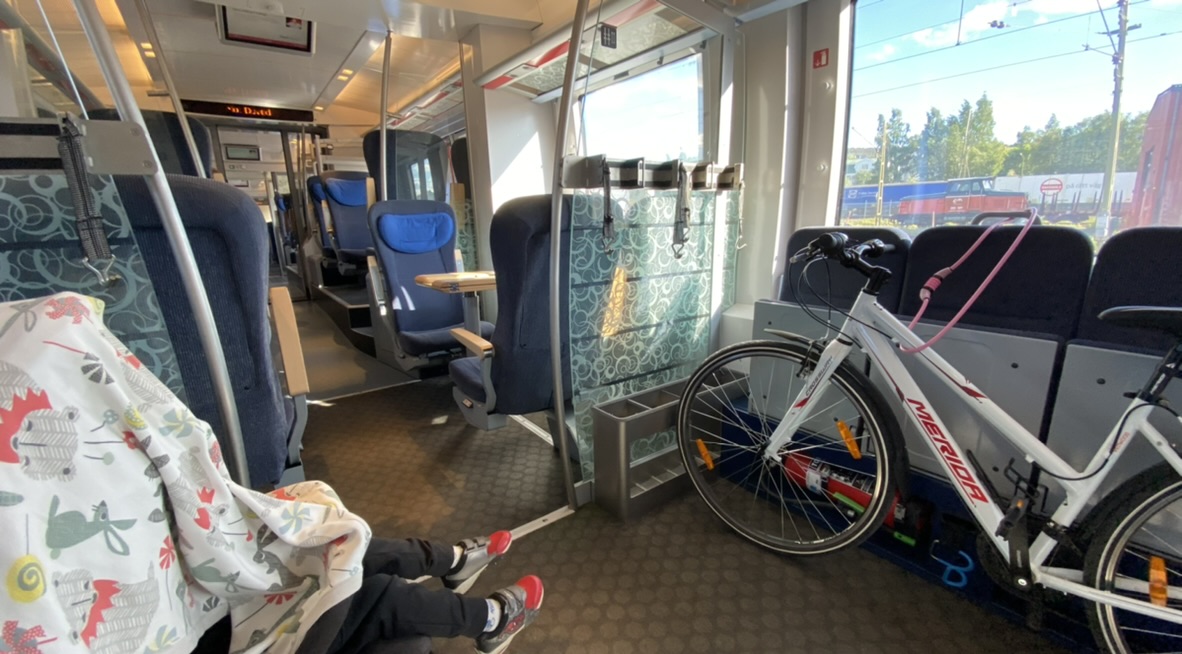In 2003, Agneta Ståhl and Susanne Iwarsson at Lund University published what became one of the most cited articles on Universal Design worldwide.
Earlier this year, we published a follow-up article together, questioning whether the three concepts Accessibility, Usability, and Universal Design are still confusing [1] and how they can be used together.

Three Concepts – One Harmonised Model
What we set out to do in the paper was to develop a harmonised model (Figure 1), where the three concepts capture different aspects of what affects the conditions for participation:
- Accessibility refers to indicators that are part of the relationship between a person and their environment, such as the extent to which an individual can use a product or an environment. It is a baseline (legal and moral obligation).
- Usability is about the quality of use, seen from the individual’s or group’s perspective. How effective and satisfying is the use?
- Universal Design is a value-based approach to designing for diversity that should permeate all aspects of society, from the start.
How To Use the Concepts: A Story from a Train
I took a photo onboard a train from Sundsvall to Östersund in northern Sweden a couple of years ago that will serve as an example here.
I love to discuss this photo with my students. My favourite question to ask them:
“What do you notice in this situation?”

Let me describe the photo, or rather, the situation:
The photo is taken inward to the train car. Since I am using a wheelchair, I was directed to an open space near the toilets.
There were no steps when I entered the train. I turned left, around a large toilet. There, marked with a wheelchair sign, was a space with a bike, a stroller, and a place for me to sit.
Further into the train carriage, there were seats and tables for the other passengers. They could also sit facing each other and had plenty of space.
Three common reflections from my students
- “It looks like you are sitting in a luggage compartment”.
- “You have no table.”
- “You can’t sit with someone else, and not where the others are sitting.”
Correct, all three. The absurdity of the situation is actually why I took the photo in the first place. (What makes someone take a photograph?)
Using The Model To Analyse the Train Ride
If we use the model to analyse the train situation, we find that:
Accessibility ✅
Accessibility: The train was accessible in a “mechanistic” sense. There were no steps to get in; I had access to a large toilet and a place where I could sit. I got from point A to B. The train’s design met basic accessibility standards.
Usability 🛑
Usability: I had no table, no power outlet, and I couldn’t work as I had planned. I wasn’t particularly satisfied with the situation and got nothing done. I felt isolated from the other “normal/typical” passengers, treated as different and less worthy. In short, the usability was rubbish.
Universal Design 🛑
Universal Design: not even close. This is a very good, poor example of something designed rather recently, and still exhibiting outdated values. It is also a good example where a Universal Design mindset probably would have rendered a different layout and experience.
Accessibility Is Not Enough
The story I have presented here is an example of why it is not enough to work with access requirements alone. Accessibility is a prerequisite, but we need usability and universal design perspectives as well, to capture as many aspects as possible about the conditions for participation. Ultimately, they affect who can go where, together with whom, contribute to what and do what in society.
My students quite easily recognise the pattern of norm and deviation that the layout of this train manifests.
They also see how they, with some minor tweaks, could improve the situation significantly, for instance by making the train’s seating arrangement more flexible and less compartmentalised. This is a thought experiment that I usually do with them to end the class on a positive note.
What’s your favourite question to ask about design decisions, dignity and diversity?
Link to paper (free to download):
Hedvall, P.-O., Ståhl, A., & Iwarsson, S. (2025). Accessibility, usability and universal design – still confusing? Harmonisation of key concepts describing person-environment interaction to create conditions for participation. Disability and Rehabilitation, 1–10. https://doi.org/10.1080/09638288.2025.2491831.

